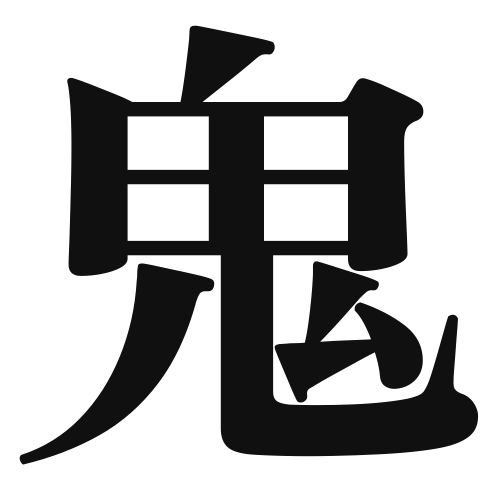1. Overview of Meaning
The kanji “鬼” (oni) primarily means “demon” or “ogre” in Japanese. It represents a supernatural creature often depicted as malevolent and fearsome, commonly found in folklore and mythology.
2. Formation and Radical
Formation of the Kanji: The kanji “鬼” is a pictogram, originally depicting a creature with horns and a fierce expression. It is classified as a ideogram as well, representing the concept of a demon or spirit.
Radical: The radical for “鬼” is also “鬼,” which is used in other kanji related to demons or spirits.
3. Examples of Usage
Common Words and Phrases: Some frequently used words that include “鬼” are:
- 鬼滅 (kimetsu) – demon slaying
- 鬼ごっこ (oni goccho) – a game similar to tag, where one person is the “oni”
Example Sentences in Daily Conversation:
- 「あの映画には鬼が出てくる。」(That movie has demons in it.)
- 「子供たちは鬼ごっこをして遊んでいる。」(The children are playing tag.)
4. Synonyms and Antonyms
Similar Kanji: A similar kanji is “魔” (ma), which means “witch” or “evil spirit.” While both represent supernatural beings, “鬼” typically refers to a more physical and monstrous entity, whereas “魔” often implies a more mystical or magical presence.
Opposite Kanji: An antonym could be “神” (kami), meaning “god” or “deity,” representing benevolence and divinity in contrast to the malevolence associated with “鬼.”
5. Cultural and Historical Background
Relation to Japanese Culture: In Japanese culture, “鬼” is often associated with festivals such as Setsubun, where people throw beans to drive away demons and invite good fortune. It symbolizes the struggle between good and evil.
Proverbs and Idioms: One common saying is “鬼に金棒” (oni ni kanabō), which means “a demon with an iron club,” referring to someone who is already strong becoming even stronger.
